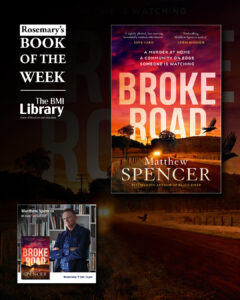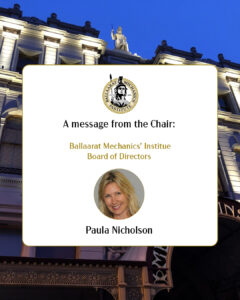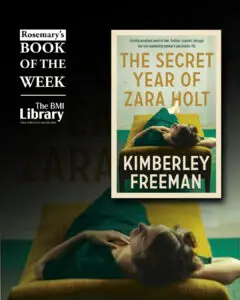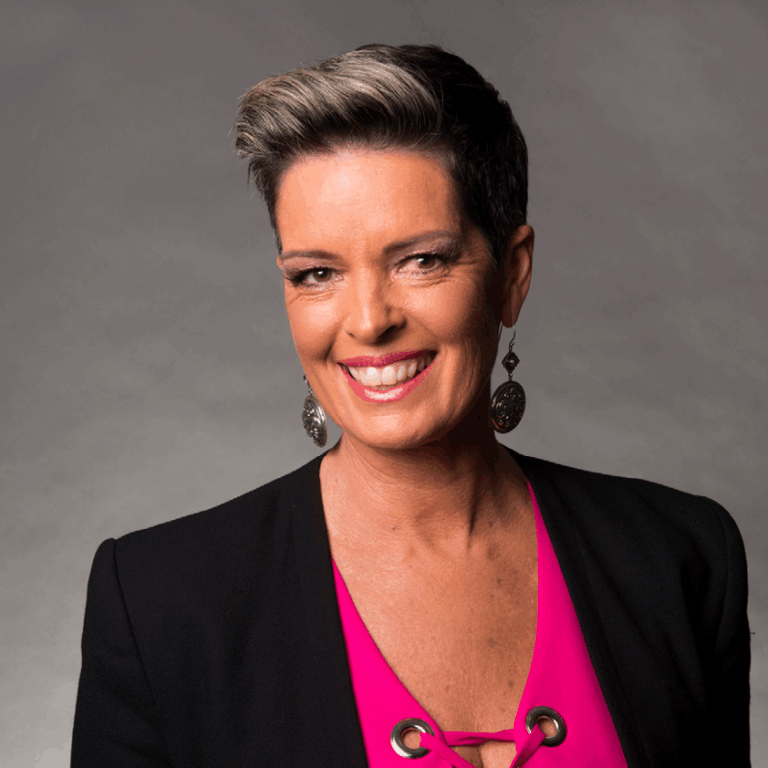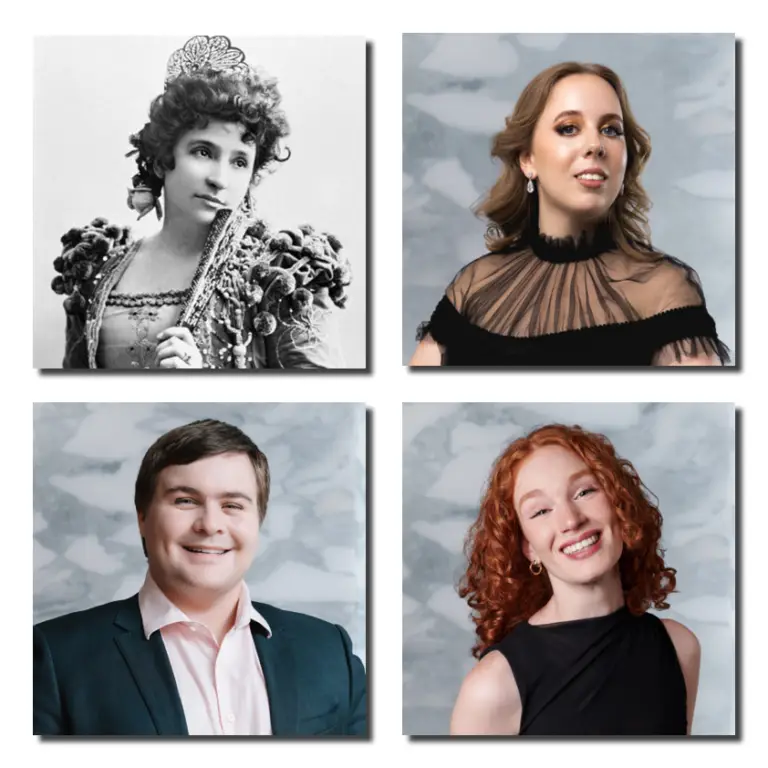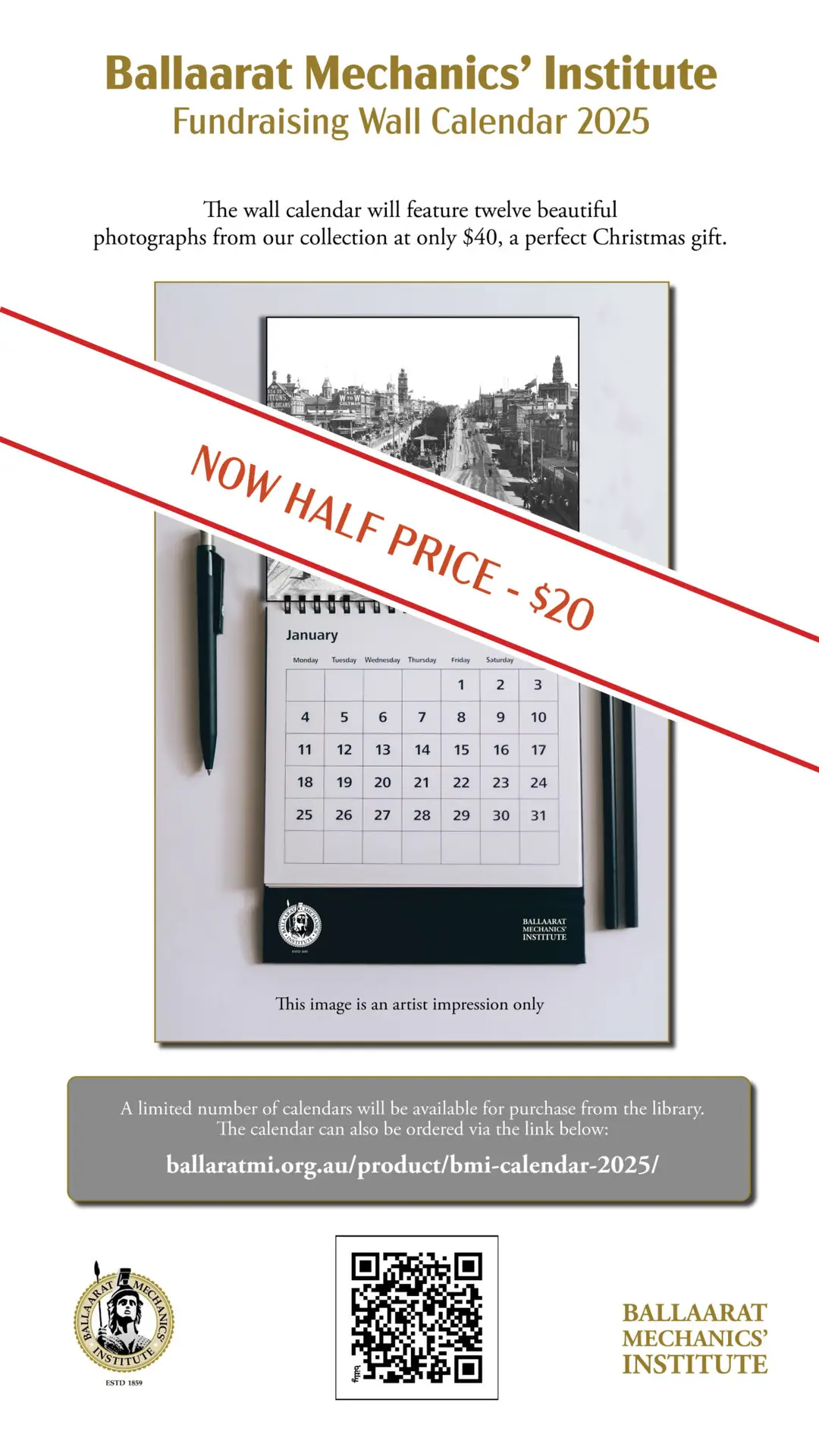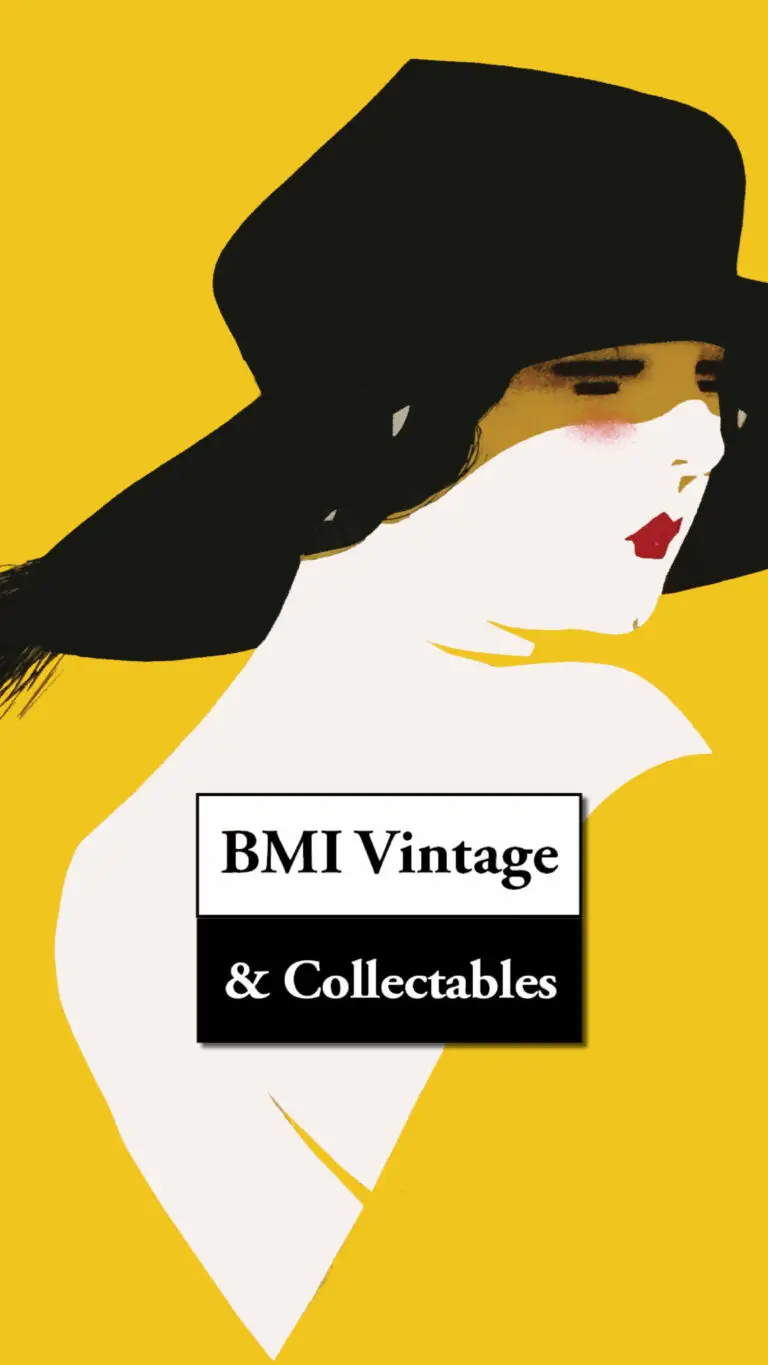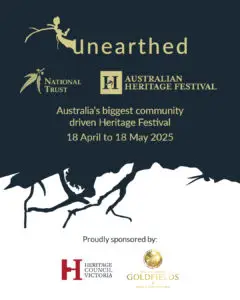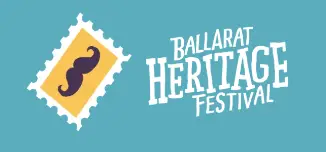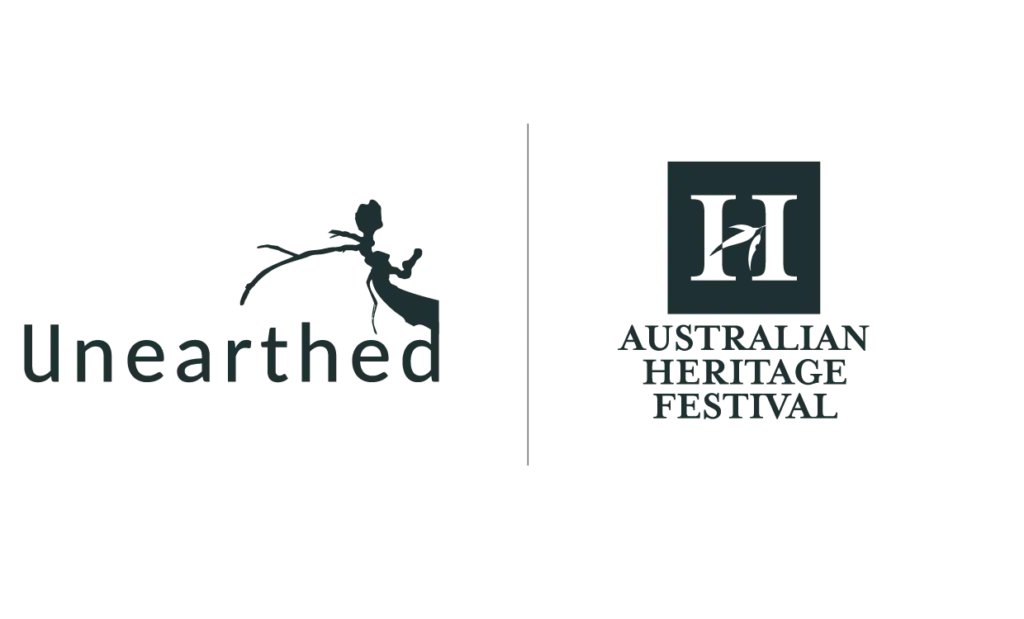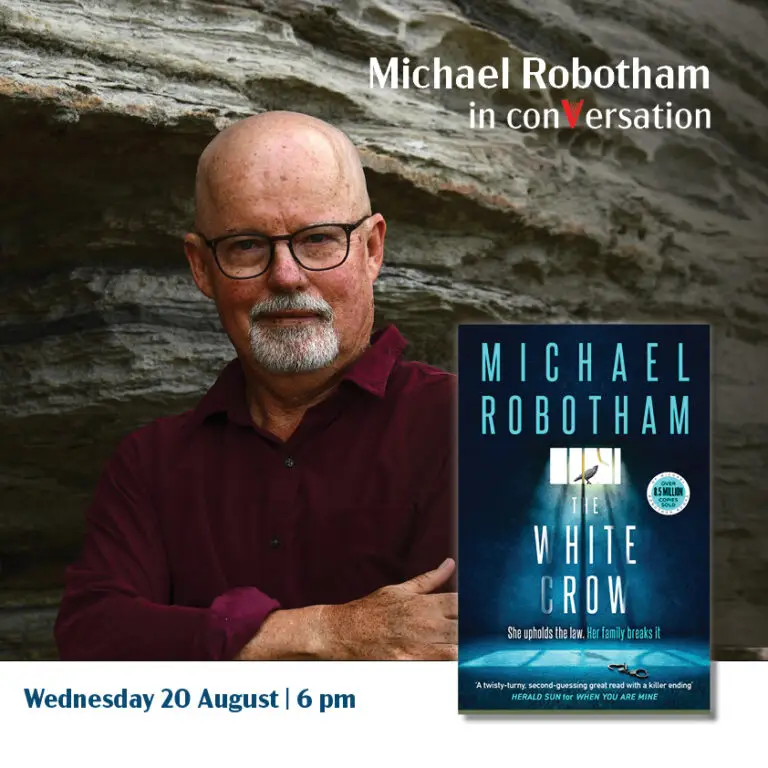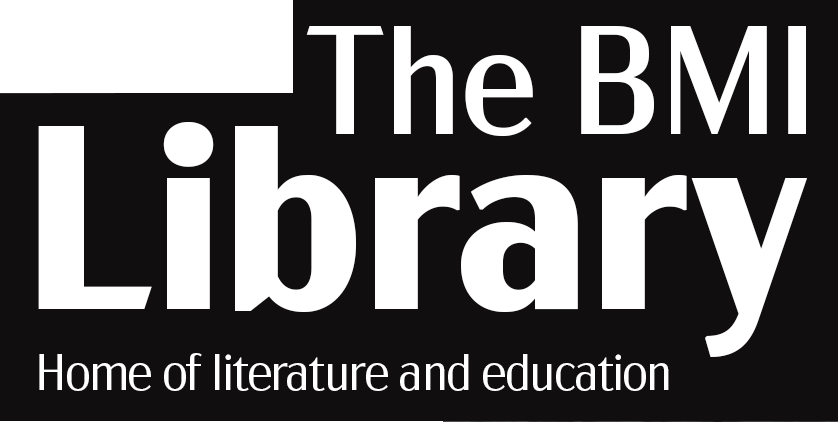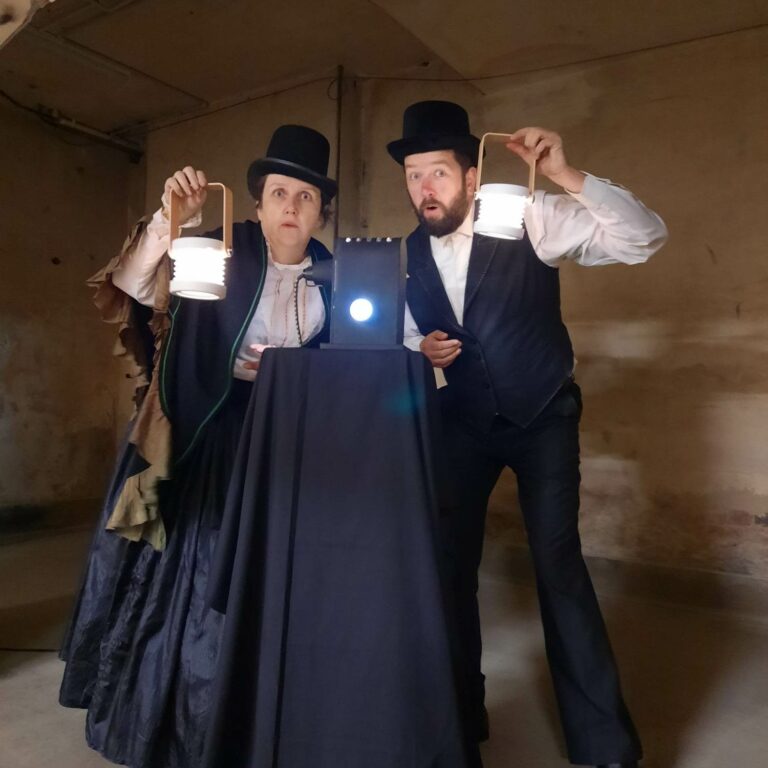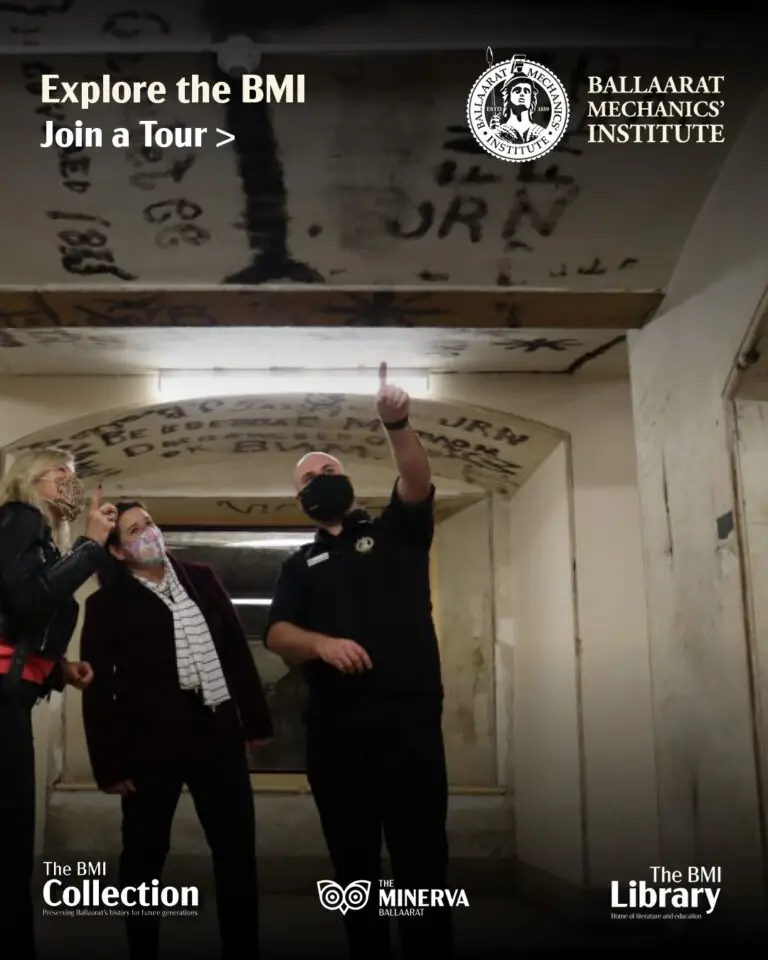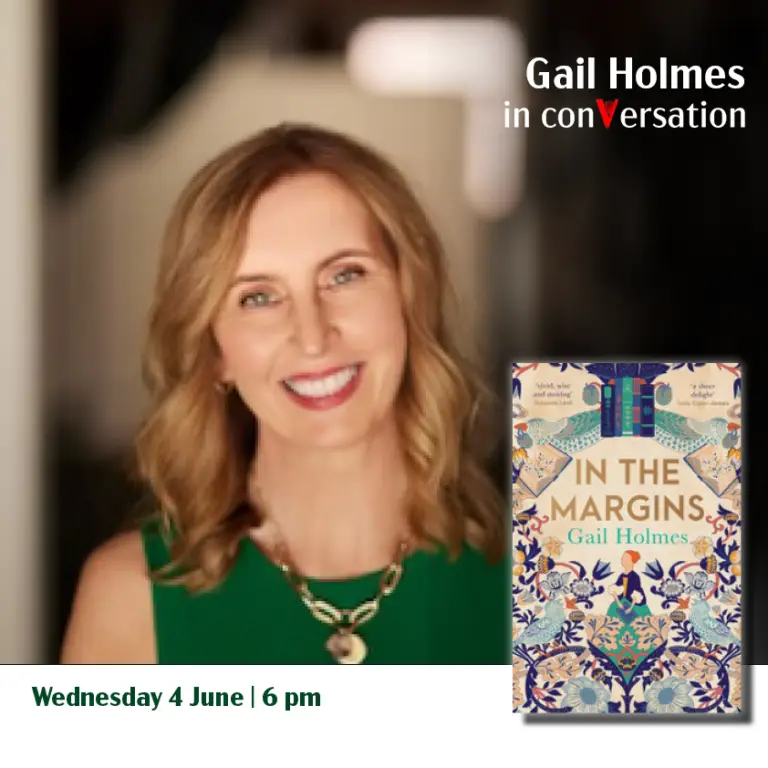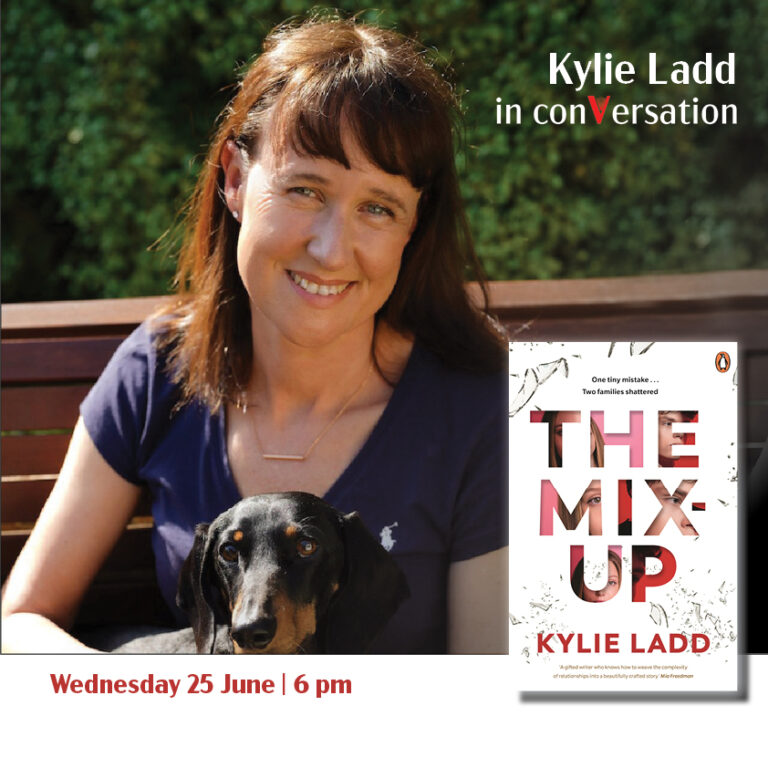The Large Hall/Auditorium
The large hall or auditorium of the Ballaarat Mechanic’s Institute occupied all of the upper story of the first (back) section of the Institute built in 1860. The hall is 84 ft. long, 47 ft. wide and has a 25ft. ceiling. It was designed as a lecture hall, meeting, function and exhibition room. A stage and gallery were added in 1869.
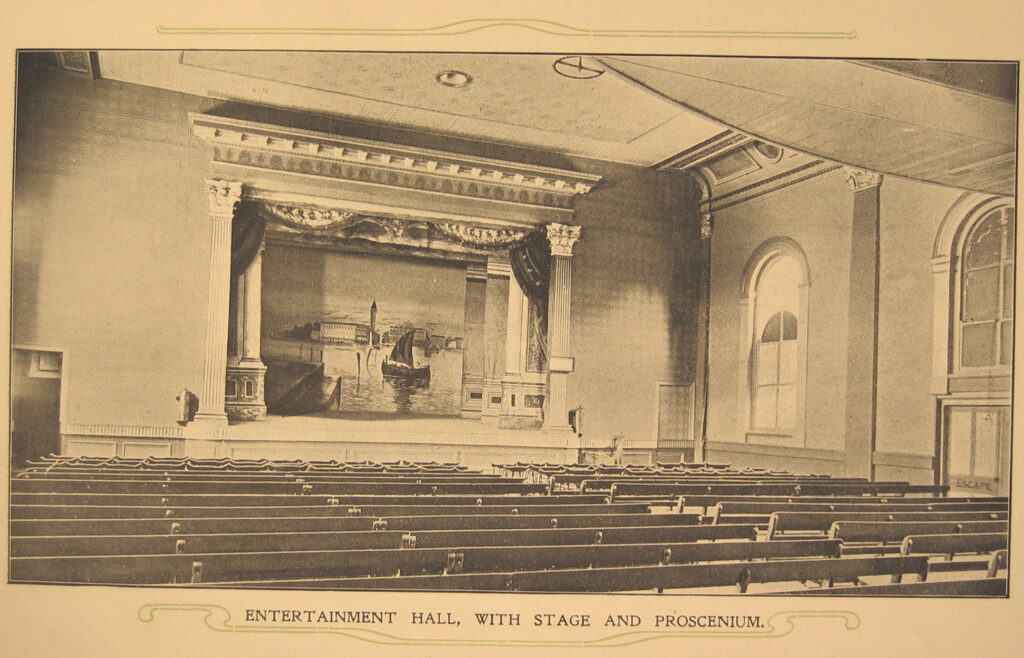
Cinema History
1900 J.C.Williamson and Wybert Reeve show a series of animated (Boer) War pictures, and some England-Australia Cricket highlights. Reeve hosted the first public demonstration in South Australia of moving pictures with a cinématographe Lumière projector in 1896.
1909 The hall was let, for a short period, to a J. C. Langley (operating as J. C. Langley’s Living Pictures and J. C. Langley’s Electric British Bioscope).
1915 Hall was closed on 20th. June due to fire in the proscenium (the section between the stage and the audience).
1916 Hall was re-opened on 12th. September after construction of a new and larger proscenium.
1917 Hall let to the Austral Photoplay Company for showing pictures.
1919 Hall leased to a syndicate of Messrs J. Clemens, C. Gemmola, L. Morgan and F. C. Jelbart and opened as the Britannia Theatre.
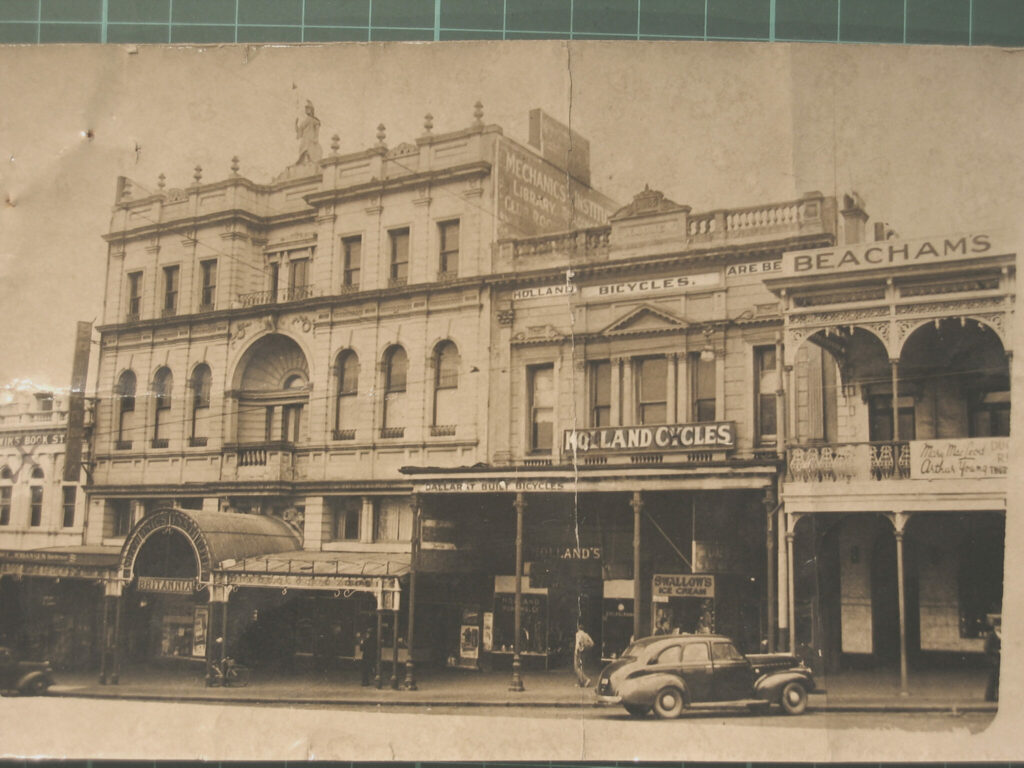
1920 A bioscope room and 375 new seats added to the theatre.
1928 The hall was redecorated and most of the seating replaced.
1930 The operator’s cabin was enlarged to accommodate additional projection equipment and a winding room.
1962 Britannia Pictures sublet the theatre (now known as the Odeon) to Mr. R. Pappas.
1965 Lease of Odeon theatre transferred to Village Drive-In, Ballarat.
1966 Theatre re-opened as the Vegas 70 by Village Drive-In.
1981 Vegas 70 theatre closed. All projection, audio equipment, screen and seating removed by lessee.
1982 Lyric Theatre Company leased the hall for 11 years and used it for live performance rehearsals, stage set productions and costume hire.
1993 Hall was leased by Ballarat Cinemas Pty. Ltd. and opened as the Sturt Cinema in September 1994.
1994 Sturt Cinema opened.
2004 Sturt Cinema lease expired. All projection, auto equipment and screen removed by lessee. Hall reverts to the Mechanic’s Institute.
2009 Refurbishment of the theatre commenced.
2013 The theatre re-opened on November 8 2013 with the new name of Minerva Space.
2014 A backlit screen was fitted with a multi-use digital projection system and is now used for regular film events.
2022 The Ballarat Film Society have screenings on the 2nd Thursday of each month.
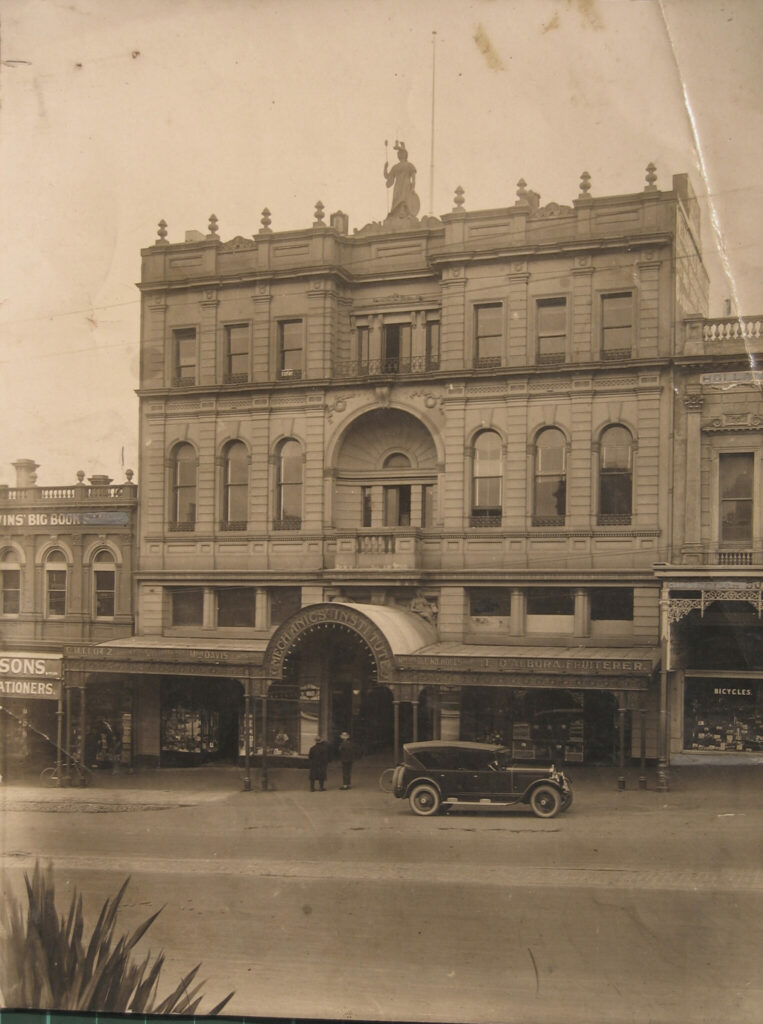
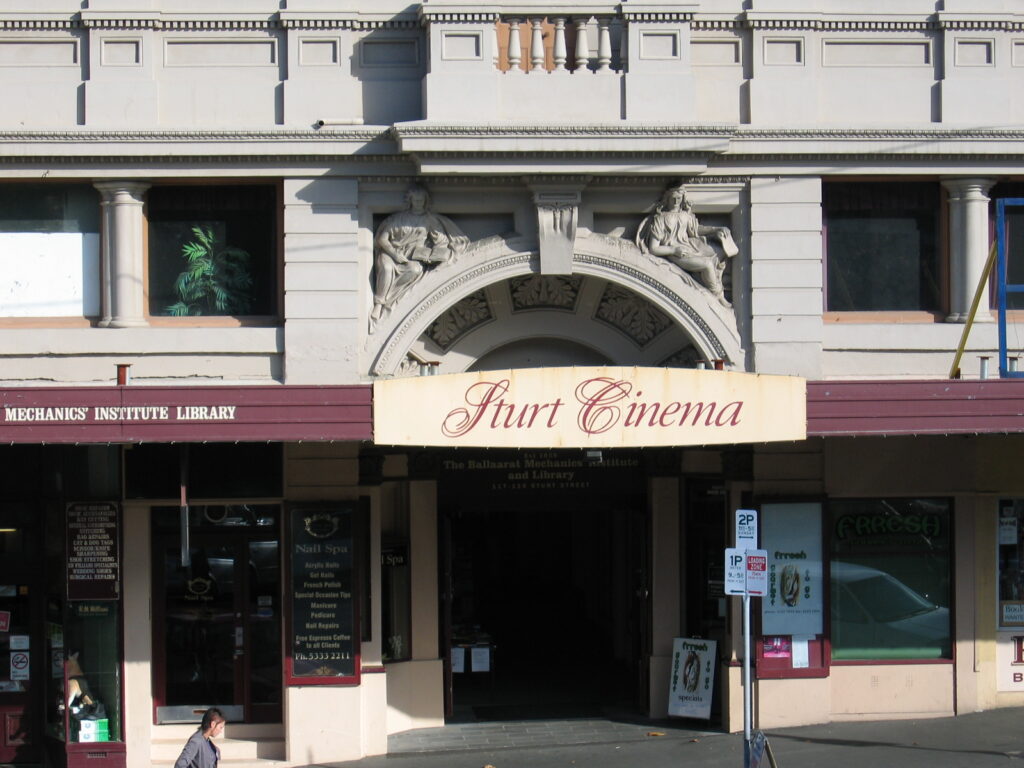
From Design & Art Australia Online biography.
” John Wesley Burtt, painter, was born in London, the eldest son of John and Mary Anne Burtt. His father John Goulson Burtt (1809 -1901) was an ironmonger. Burtt Snr arrived in Port Phillip in the Strathfieldsaye in April 1853, bringing a cargo of hardware. He established a retail store in Russell Street and appears to have made more than one voyage between England and the colony. In 1858 he again sailed from Britain with his wife Mary Anne, three other sons and a daughter, in the Eagle. The exact date John Wesley emigrated has not been confirmed, but he was resident in Melbourne by 1860 when the Melbourne Directories list him as the proprietor of a family business at the Eastern Market in Bourke Street.
John Goulson Burtt became reasonably prominent in Melbourne public life. He was a vocal advocate of social reform, a supporter of the Temperance movement and the Church of Christ. He was elected to parliament, representing North Melbourne from 1864 to 1874.
Why John Wesley Burtt chose to become a painter is unknown. It appears unlikely Burtt had any formal art training in Britain before emigrating. The earliest notice of Burtt’s work as a painter is in the Argus describing him as a “young artist” and mentioning the “…slight means he has had of acquiring art-education…” (27 August 1869 p.4).
Burtt appears to have had the support of his family in this choice of career. When the Victorian Academy of Art was established in 1870 J W Burtt is listed as a foundation member, and J G Burtt MLA as a subscriber. Burtt Snr supported the interests of his sons and son-in-law during his parliamentary career, giving rise to accusations of nepotism (see for example the Argus, 17 January 1868 p.6, 30 April 1879 p.8 and Melbourne Punch 7 March 1872 p.73). Father and son shared a home in North Fitzroy until Burtt Snr died aged 92, in 1901.
Burtt exhibited a number of works in colonial exhibitions during the late 1860s and 1870s. These were predominantly copies of paintings in the Melbourne Art Gallery (later the National Gallery of Victoria), or portraits of public figures, such as Members of Parliament.
The first public display of Burtt’s work was the inclusion of six portraits of unidentified ‘gentlemen’ and eight copies of works in the 1869 Melbourne Public Library exhibition. The copies included Rachel at the Well, Sheep in Repose, Melancthon and News from Australia.
Burtt exhibited these copies, and some identified portraits, in subsequent exhibitions: the Geelong Mechanics Institute exhibition of 1869, the Ballarat fine arts exhibition in July 1869 and the Intercolonial Exhibition held in Sydney during August 1870.
Burtt contributed three portraits to the First Victorian Academy of Fine Arts in 1870, copies being ineligible for hanging in the Academy show. The critics were not kind – the Argus thought the portraits of Sir Charles Darling KCB and the Hon Sir James McCulloch were characterized by “imperfect drawing” and the “Portrait of a Lady” seemed to be wearing a wig put on “all awry” (Argus 1 December 1870 p.7).
It has been speculated this portrait of Sir Charles Darling is the painting now in this State Library of Victoria collection. There is no evidence to support this claim. Indeed the portrait was presented to the National Gallery in 1890, when both the artist and his father were alive, and they would surely have claimed credit for the work if it had been painted by Burtt.
Later Burtt exhibited a View of Hobart Town in the Victorian Intercolonial Exhibition of 1875, and twelve paintings in the Intercolonial Exhibition of 1876 held in Brisbane. Two of his works, Suburban Melbourne and Portrait of J. Bosisto MP were included in the Victorian court of the Intercolonial exhibition held in London in 1886. In 1888 the Melbourne Turn Verein (German choral society) commissioned a portrait of their president, Her W. Weibaden, from him (Argus 28 April 1888 p.13).
The current location of these works is unknown. The only painting positively attributed to Burtt is the large work, Batman’s treaty with the Aborigines at Merri Creek, 6th June 1835, now in the State Library of Victoria collection.
Burtt died in Fitzroy in 1917. He was buried in Melbourne General Cemetery near his mother and brothers, who had all predeceased him. He left no estate for probate.”
From Design & Art Australia Online biography.
” John Wesley Burtt, painter, was born in London, the eldest son of John and Mary Anne Burtt. His father John Goulson Burtt (1809 -1901) was an ironmonger. Burtt Snr arrived in Port Phillip in the Strathfieldsaye in April 1853, bringing a cargo of hardware. He established a retail store in Russell Street and appears to have made more than one voyage between England and the colony. In 1858 he again sailed from Britain with his wife Mary Anne, three other sons and a daughter, in the Eagle. The exact date John Wesley emigrated has not been confirmed, but he was resident in Melbourne by 1860 when the Melbourne Directories list him as the proprietor of a family business at the Eastern Market in Bourke Street.
John Goulson Burtt became reasonably prominent in Melbourne public life. He was a vocal advocate of social reform, a supporter of the Temperance movement and the Church of Christ. He was elected to parliament, representing North Melbourne from 1864 to 1874.
Why John Wesley Burtt chose to become a painter is unknown. It appears unlikely Burtt had any formal art training in Britain before emigrating. The earliest notice of Burtt’s work as a painter is in the Argus describing him as a “young artist” and mentioning the “…slight means he has had of acquiring art-education…” (27 August 1869 p.4).
Burtt appears to have had the support of his family in this choice of career. When the Victorian Academy of Art was established in 1870 J W Burtt is listed as a foundation member, and J G Burtt MLA as a subscriber. Burtt Snr supported the interests of his sons and son-in-law during his parliamentary career, giving rise to accusations of nepotism (see for example the Argus, 17 January 1868 p.6, 30 April 1879 p.8 and Melbourne Punch 7 March 1872 p.73). Father and son shared a home in North Fitzroy until Burtt Snr died aged 92, in 1901.
Burtt exhibited a number of works in colonial exhibitions during the late 1860s and 1870s. These were predominantly copies of paintings in the Melbourne Art Gallery (later the National Gallery of Victoria), or portraits of public figures, such as Members of Parliament.
The first public display of Burtt’s work was the inclusion of six portraits of unidentified ‘gentlemen’ and eight copies of works in the 1869 Melbourne Public Library exhibition. The copies included Rachel at the Well, Sheep in Repose, Melancthon and News from Australia.
Burtt exhibited these copies, and some identified portraits, in subsequent exhibitions: the Geelong Mechanics Institute exhibition of 1869, the Ballarat fine arts exhibition in July 1869 and the Intercolonial Exhibition held in Sydney during August 1870.
Burtt contributed three portraits to the First Victorian Academy of Fine Arts in 1870, copies being ineligible for hanging in the Academy show. The critics were not kind – the Argus thought the portraits of Sir Charles Darling KCB and the Hon Sir James McCulloch were characterized by “imperfect drawing” and the “Portrait of a Lady” seemed to be wearing a wig put on “all awry” (Argus 1 December 1870 p.7).
It has been speculated this portrait of Sir Charles Darling is the painting now in this State Library of Victoria collection. There is no evidence to support this claim. Indeed the portrait was presented to the National Gallery in 1890, when both the artist and his father were alive, and they would surely have claimed credit for the work if it had been painted by Burtt.
Later Burtt exhibited a View of Hobart Town in the Victorian Intercolonial Exhibition of 1875, and twelve paintings in the Intercolonial Exhibition of 1876 held in Brisbane. Two of his works, Suburban Melbourne and Portrait of J. Bosisto MP were included in the Victorian court of the Intercolonial exhibition held in London in 1886. In 1888 the Melbourne Turn Verein (German choral society) commissioned a portrait of their president, Her W. Weibaden, from him (Argus 28 April 1888 p.13).
The current location of these works is unknown. The only painting positively attributed to Burtt is the large work, Batman’s treaty with the Aborigines at Merri Creek, 6th June 1835, now in the State Library of Victoria collection.
Burtt died in Fitzroy in 1917. He was buried in Melbourne General Cemetery near his mother and brothers, who had all predeceased him. He left no estate for probate.”

